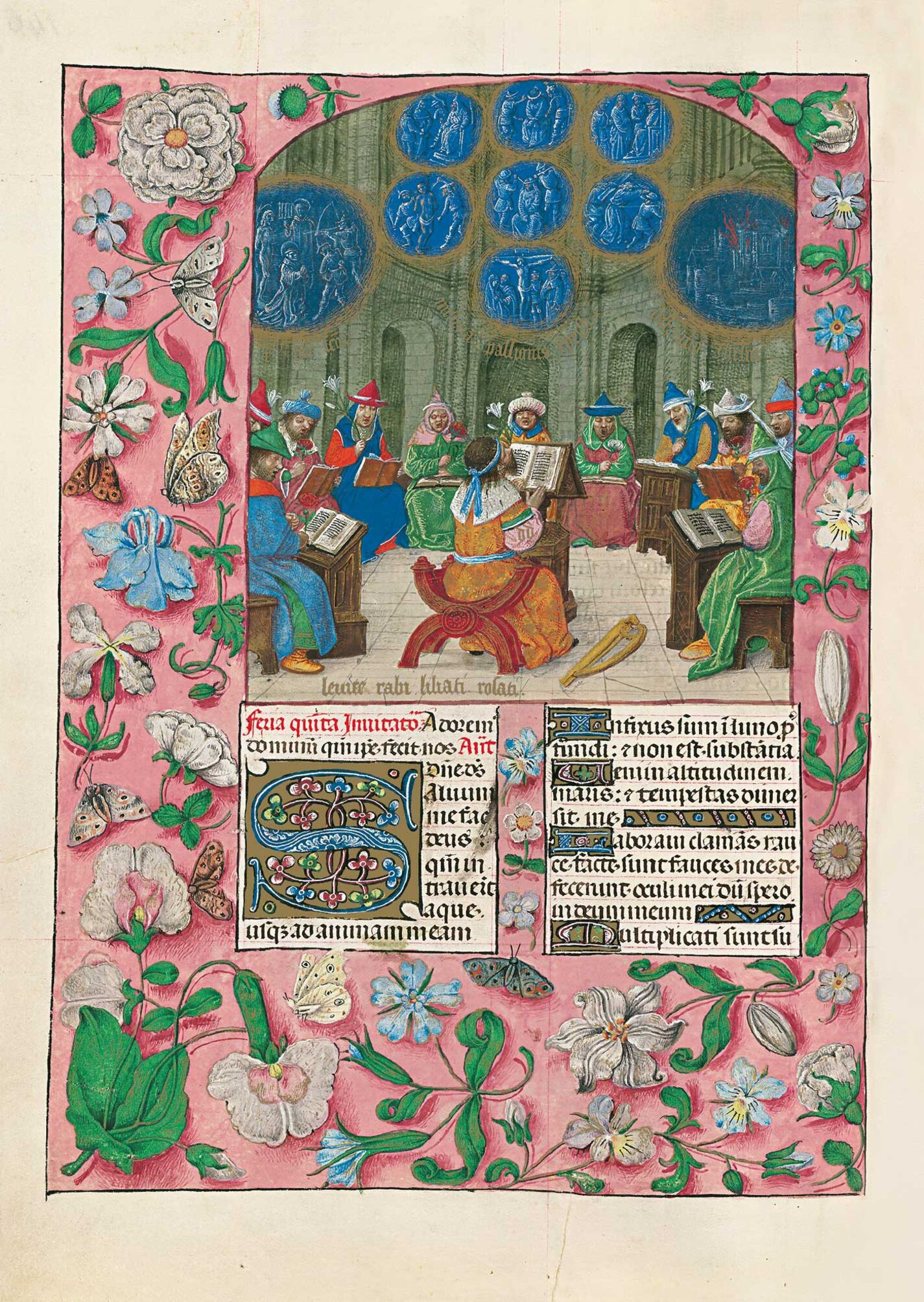This painting, from the first production phase of the
Breviary, is the work of the Master of the Dresden Prayer Book and is situated in the psalter, to illustrate Psalm 68 to be precise. In the middle of a building with a centralised layout is king David – recognisable by the royal crown on his head, his ermine collar and the cordless harp lying on his right – reading a codex upon a lectern. He is surrounded by eleven singers holding books and kneeling on prie-dieux or the floor. They are all dressed in Jewish-style garb and carry allegorical flowers: lilies and white roses symbolising purity and faith respectively, and red roses for charity. One surprising iconographic feature is that most of the singers are praying with their mouths open. This is extremely unusual in medieval tradition since in most images only persons of lowly birth or morals are shown with their mouth open. Above them are nine medallions: the one on the far left features three martyrs: Saint Sebastian, Saint Laurence and Saint Stephen. The right-hand medallion contains a large building on fire in the middle of a fortified city with a legend underneath reading
destructio Jhe[
rusa]
l[
e]
m. Finally, in the centre at the top of the composition are seven tondos with gold frames like the previous ones, containing scenes from the Passion of Christ: Jesus before Annas, the mockery, the Lord before Caiphas, the scourging, the crowning with thorns, Jesus on the road to Calvary, and the crucifixion. Underneath is a golden legend reading
misteria passionis xpristi·.
Since text of the psalter narrates no specific happenings there is plenty of scope for illustrations. Although scenes from David’s life were logically the ones portrayed most often, the
Isabella Breviary emphasises particularly the construction, destruction and reconstruction of Jerusalem and the Temple, and, as in this instance, celebration scenes with singers and musicians led by David. No other contemporary codex has a similar cycle. The psalter’s iconography may have been influenced by the commentary on the psalms in the monumental
Postillae perpetuae in universam S. Scripturam by Nicholas of Lyra (1270-1340).
